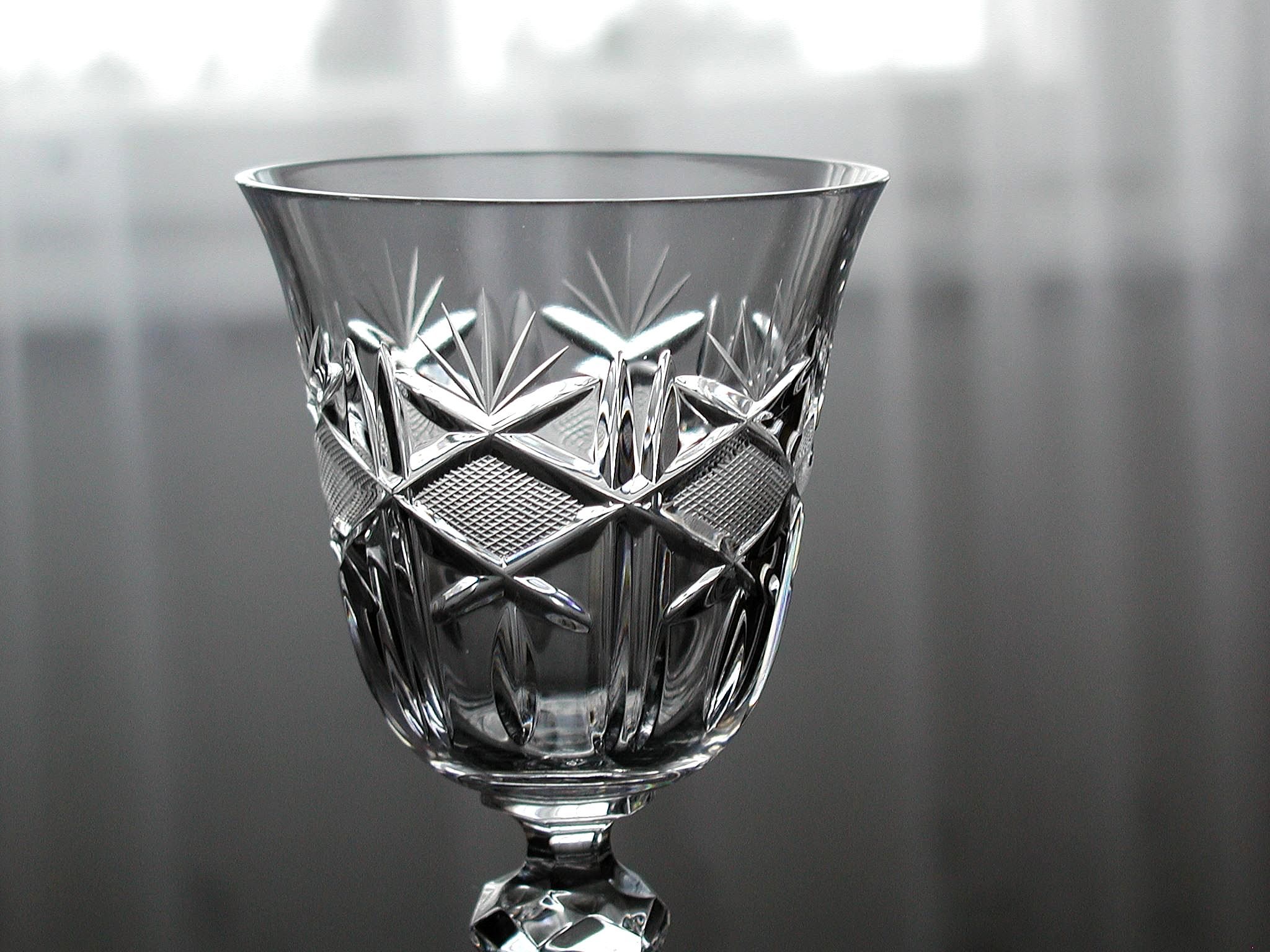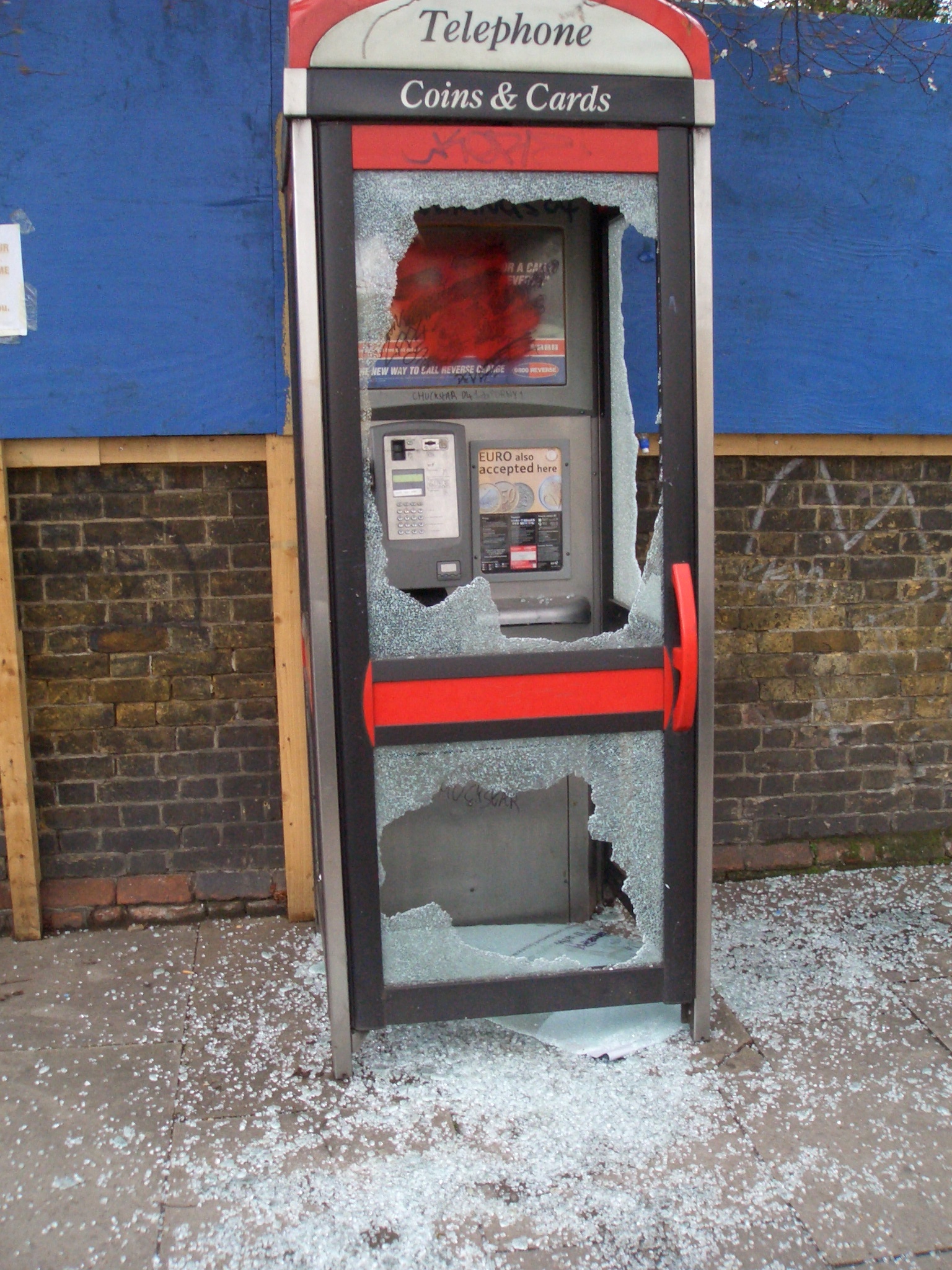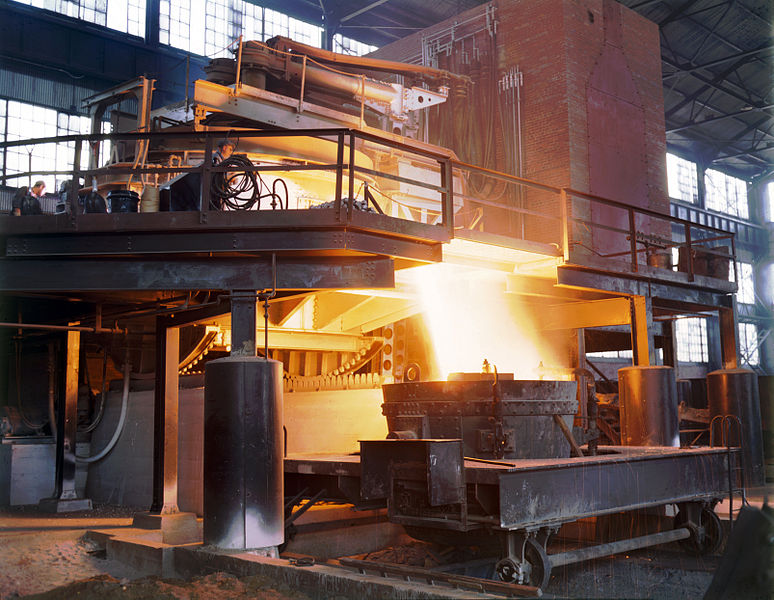|
Glass Cutter
A glass cutter is a tool used to make a shallow score in one surface of a piece of glass (normally a flat one) that is to be broken in two pieces, for example to fit a window. The scoring makes a split in the surface of the glass which encourages the glass to break along the score. This is not to be confused with the tools used to make cut glass objects. Regular, annealed glass can be broken apart this way but not tempered glass as the latter tends to shatter rather than breaking cleanly into two pieces. History In the Middle Ages, glass was cut with a heated and sharply pointed iron rod. The red hot point was drawn along the moistened surface of the glass causing it to snap apart. Fractures created in this way were not very accurate and the rough pieces had to be chipped or "grozed" down to more exact shapes with a hooked tool called a grozing iron. Between the 14th and 16th centuries, starting in Italy, a diamond-tipped cutter became prevalent which allowed for more precise ... [...More Info...] [...Related Items...] OR: [Wikipedia] [Google] [Baidu] |
Glass Cutter
A glass cutter is a tool used to make a shallow score in one surface of a piece of glass (normally a flat one) that is to be broken in two pieces, for example to fit a window. The scoring makes a split in the surface of the glass which encourages the glass to break along the score. This is not to be confused with the tools used to make cut glass objects. Regular, annealed glass can be broken apart this way but not tempered glass as the latter tends to shatter rather than breaking cleanly into two pieces. History In the Middle Ages, glass was cut with a heated and sharply pointed iron rod. The red hot point was drawn along the moistened surface of the glass causing it to snap apart. Fractures created in this way were not very accurate and the rough pieces had to be chipped or "grozed" down to more exact shapes with a hooked tool called a grozing iron. Between the 14th and 16th centuries, starting in Italy, a diamond-tipped cutter became prevalent which allowed for more precise ... [...More Info...] [...Related Items...] OR: [Wikipedia] [Google] [Baidu] |
Glass
Glass is a non-crystalline, often transparent, amorphous solid that has widespread practical, technological, and decorative use in, for example, window panes, tableware, and optics. Glass is most often formed by rapid cooling ( quenching) of the molten form; some glasses such as volcanic glass are naturally occurring. The most familiar, and historically the oldest, types of manufactured glass are "silicate glasses" based on the chemical compound silica (silicon dioxide, or quartz), the primary constituent of sand. Soda–lime glass, containing around 70% silica, accounts for around 90% of manufactured glass. The term ''glass'', in popular usage, is often used to refer only to this type of material, although silica-free glasses often have desirable properties for applications in modern communications technology. Some objects, such as drinking glasses and eyeglasses, are so commonly made of silicate-based glass that they are simply called by the name of the material. D ... [...More Info...] [...Related Items...] OR: [Wikipedia] [Google] [Baidu] |
Cut Glass
Cut glass or cut-glass is a technique and a style of decorating glass. For some time the style has often been produced by other techniques such as the use of moulding, but the original technique of cutting glass on an abrasive wheel is still used in luxury products. On glassware vessels, the style typically consists of furrowed faces at angles to each other in complicated patterns, while for lighting fixtures, the style consists of flat or curved facets on small hanging pieces, often all over. Historically, cut glass was shaped using "coldwork" techniques of grinding or drilling, applied as a secondary stage to a piece of glass made by conventional processes such as glassblowing. Today, the glass is often mostly or entirely shaped in the initial process by using a mould ( pressed glass), or imitated in clear plastic. Traditional hand-cutting continues, but gives a much more expensive product. Lead glass has long been misleadingly called "crystal" by the industry, evoking th ... [...More Info...] [...Related Items...] OR: [Wikipedia] [Google] [Baidu] |
Annealed Glass
Annealing is a process of slowly cooling hot glass objects after they have been formed, to relieve residual internal stresses introduced during manufacture. Especially for smaller, simpler objects, annealing may be incidental to the process of manufacture, but in larger or more complex products it commonly demands a special process of annealing in a temperature-controlled kiln known as a lehr.E. F. Collins (1921) Electrically heated glass annealing lehr. Journal of the American Ceramic Society 4 (5), pp. 335–349 Annealing of glass is critical to its durability. Glass that has not been properly annealed retains thermal stresses caused by quenching, which will indefinitely decrease the strength and reliability of the product. Inadequately annealed glass is likely to crack or shatter when subjected to relatively small temperature changes or to mechanical shock or stress. It even may fail spontaneously. To anneal glass, it is necessary to heat it to its annealing temperature, a ... [...More Info...] [...Related Items...] OR: [Wikipedia] [Google] [Baidu] |
Tempered Glass
Tempered or toughened glass is a type of safety glass processed by controlled thermal or chemical treatments to increase its strength compared with normal glass. Tempering puts the outer surfaces into compression and the interior into tension. Such stresses cause the glass, when broken, to shatter into small granular chunks instead of splintering into jagged shards as ordinary annealed glass does. The granular chunks are less likely to cause injury. Tempered glass is used for its safety and strength in a variety of applications, including passenger vehicle windows, shower doors, aquariums, architectural glass doors and tables, refrigerator trays, mobile phone screen protectors, bulletproof glass components, diving masks, and plates and cookware. Properties Tempered glass is about four times stronger than annealed glass. The greater contraction of the inner layer during manufacturing induces compressive stresses in the surface of the glass balanced by tensile stresses i ... [...More Info...] [...Related Items...] OR: [Wikipedia] [Google] [Baidu] |
Middle Ages
In the history of Europe, the Middle Ages or medieval period lasted approximately from the late 5th to the late 15th centuries, similar to the post-classical period of global history. It began with the fall of the Western Roman Empire and transitioned into the Renaissance and the Age of Discovery. The Middle Ages is the middle period of the three traditional divisions of Western history: classical antiquity, the medieval period, and the modern period. The medieval period is itself subdivided into the Early, High, and Late Middle Ages. Population decline, counterurbanisation, the collapse of centralized authority, invasions, and mass migrations of tribes, which had begun in late antiquity, continued into the Early Middle Ages. The large-scale movements of the Migration Period, including various Germanic peoples, formed new kingdoms in what remained of the Western Roman Empire. In the 7th century, North Africa and the Middle East—most recently part of the Ea ... [...More Info...] [...Related Items...] OR: [Wikipedia] [Google] [Baidu] |
Diamond
Diamond is a solid form of the element carbon with its atoms arranged in a crystal structure called diamond cubic. Another solid form of carbon known as graphite is the chemically stable form of carbon at room temperature and pressure, but diamond is metastable and converts to it at a negligible rate under those conditions. Diamond has the highest hardness and thermal conductivity of any natural material, properties that are used in major industrial applications such as cutting and polishing tools. They are also the reason that diamond anvil cells can subject materials to pressures found deep in the Earth. Because the arrangement of atoms in diamond is extremely rigid, few types of impurity can contaminate it (two exceptions are boron and nitrogen). Small numbers of defects or impurities (about one per million of lattice atoms) color diamond blue (boron), yellow (nitrogen), brown (defects), green (radiation exposure), purple, pink, orange, or red. Diamond also has a ve ... [...More Info...] [...Related Items...] OR: [Wikipedia] [Google] [Baidu] |
Hardened Steel
The term hardened steel is often used for a medium or high carbon steel that has been given heat treatment and then quenching followed by tempering. The quenching results in the formation of metastable martensite, the fraction of which is reduced to the desired amount during tempering. This is the most common state for finished articles such as tools and machine parts. In contrast, the same steel composition in annealed state is softer, as required for forming and machining. Depending on the temperature and composition of the steel, it can be hardened or softened. To make steel harder, it must be heated to very high temperatures. The final result of exactly how hard the steel becomes depends on the amount of carbon present in the metal. Only steel that is high in carbon can be hardened and tempered. If a metal does not contain the necessary quantity of carbon, then its crystalline structure cannot be broken, and therefore the physical makeup of the steel cannot be altered. Frequ ... [...More Info...] [...Related Items...] OR: [Wikipedia] [Google] [Baidu] |
Tungsten Carbide
Tungsten carbide (chemical formula: WC) is a chemical compound (specifically, a carbide) containing equal parts of tungsten and carbon atoms. In its most basic form, tungsten carbide is a fine gray powder, but it can be pressed and formed into shapes through sintering for use in industrial machinery, cutting tools, chisels, abrasives, armor-piercing shells and jewelry. Tungsten carbide is approximately twice as stiff as steel, with a Young's modulus of approximately 530–700 GPa, and is double the density of steel—nearly midway between that of lead and gold. It is comparable with corundum (α-) in hardness and can be polished and finished only with abrasives of superior hardness such as cubic boron nitride and diamond powder, wheels and compounds. Naming Historically referred to as Wolfram, ''Wolf Rahm'', wolframite ore was then later carburized and cemented with a binder creating a composite now called "tungsten carbide". Tungsten is Swedish for "heavy stone". Co ... [...More Info...] [...Related Items...] OR: [Wikipedia] [Google] [Baidu] |
Float Glass
Float glass is a sheet of glass made by floating molten glass on a bed of molten metal, typically tin, although lead and other various low- melting-point alloys were used in the past. This method gives the sheet uniform thickness and very flat surfaces. Modern windows are made from float glass. Most float glass is soda-lime glass, although relatively minor quantities of specialty borosilicate and flat panel display glass are also produced using the float glass process. The float glass process is also known as the Pilkington process, named after the British glass manufacturer Pilkington, which pioneered the technique in the 1950s at their production site in St Helens, Merseyside. History Until the 16th century, window glass or other flat glass was generally cut from large discs (or rondels) of crown glass. Larger sheets of glass were made by blowing large cylinders which were cut open and flattened, then cut into panes. Most window glass in the early 19th century was made ... [...More Info...] [...Related Items...] OR: [Wikipedia] [Google] [Baidu] |
Cutting
Cutting is the separation or opening of a physical object, into two or more portions, through the application of an acutely directed force. Implements commonly used for wikt:cut, cutting are the knife and saw, or in medicine and science the scalpel and microtome. However, any sufficiently sharp object is capable of cutting if it has a hardness sufficiently larger than the object being cut, and if it is applied with sufficient force. Even liquids can be used to cut things when applied with sufficient force (see water jet cutter). Cutting is a compression (physical), compressive and shearing (physics), shearing phenomenon, and occurs only when the total stress (physics), stress generated by the cutting implement exceeds the ultimate Strength of materials, strength of the material of the object being cut. The simplest applicable equation is: \text = or \tau=\frac The stress generated by a cutting implement is directly proportional to the force with which it is applied, and in ... [...More Info...] [...Related Items...] OR: [Wikipedia] [Google] [Baidu] |








